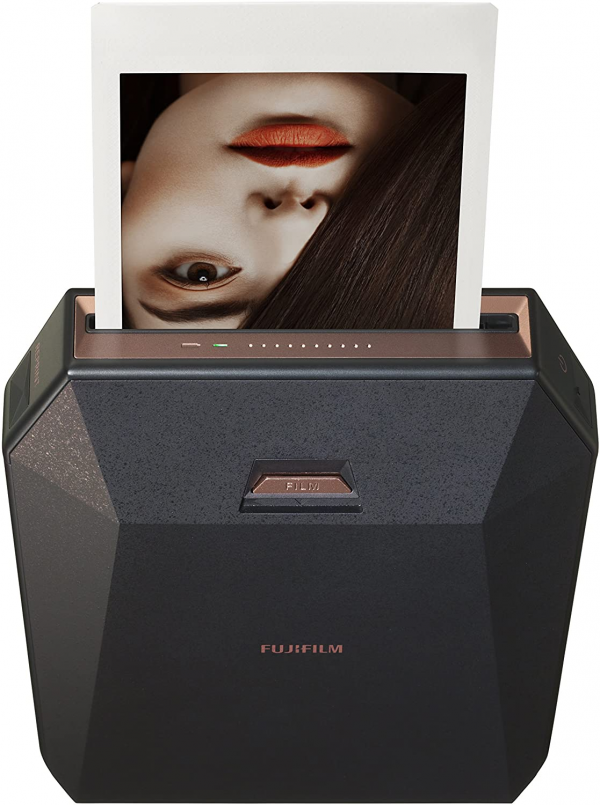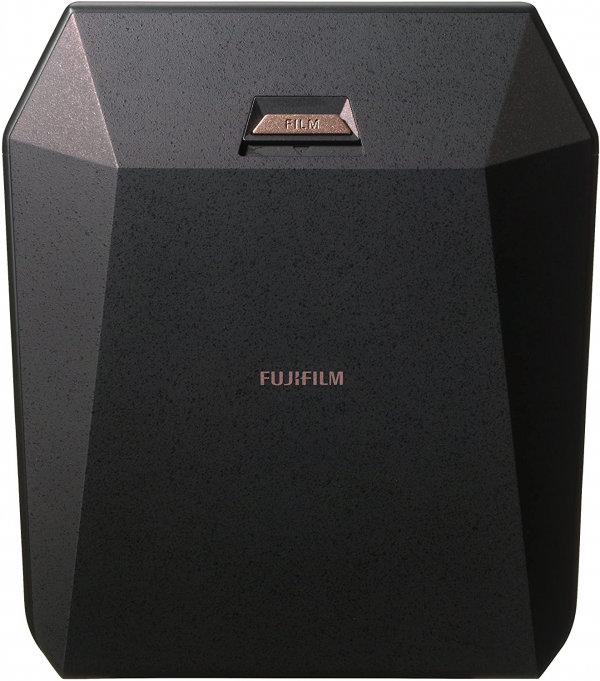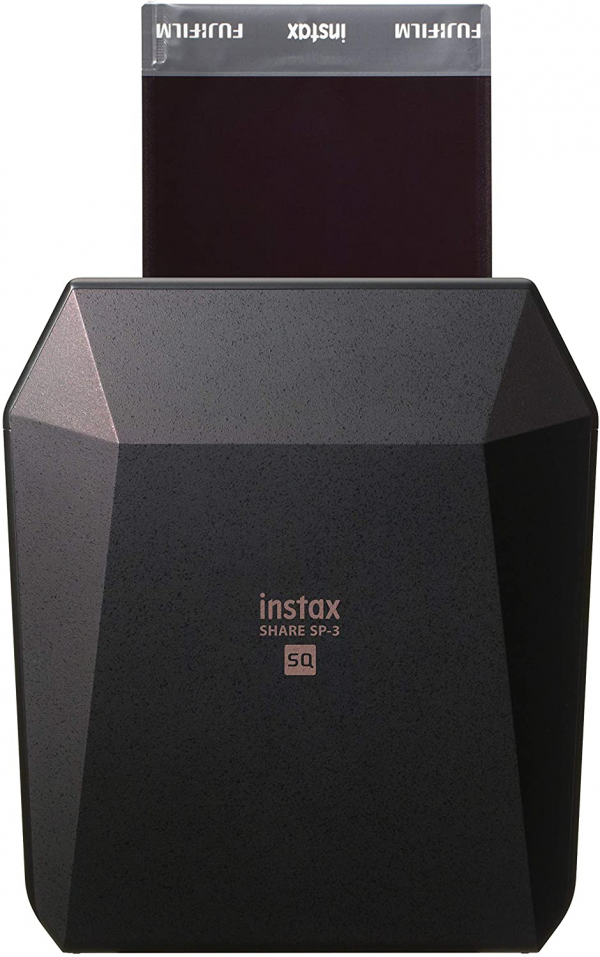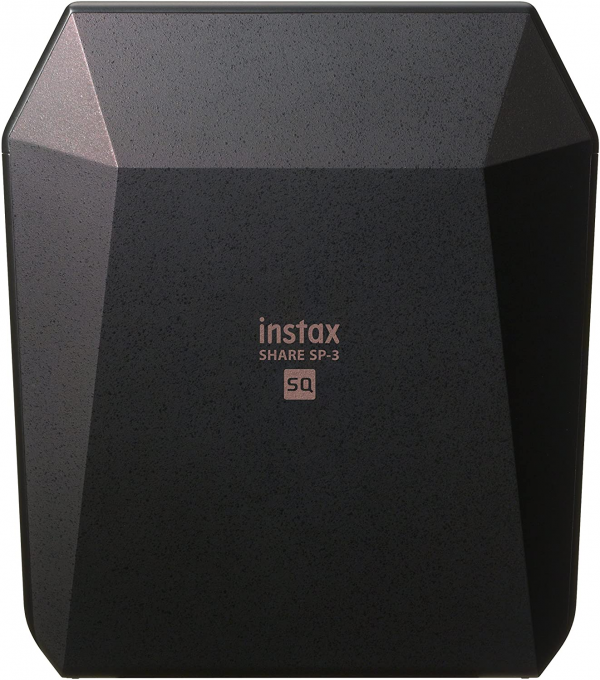Fujifilm
Fujifilm Instax Share SP-3: the neo-retro portable photo printer
Aprox. 129€
See specificationsThe Instax Share SP-3 is the new portable photo printer from Fujifilm. If it does not bring any obvious technical improvements compared to the Instax Share SP-2, it nevertheless adopts the film format Instax Square, which is a very good idea. Sold € 199, it will undoubtedly make the eye of fans of retro-nostalgic shots in vogue with the snapshot.
Positive points
Manages the excellent Instax Square print format.
Well-designed printer.
Application rich in possibilities.
Very good autonomy.
The charm of the snapshot and the silver film.
Bad points
High film refill prices.
The colorimetry could be improved.
Our review
Ergonomics
After the Instax Square SQ10, the first device compatible with the Instax Square film, it is quite logical to see Fujifilm introduce in its range of portable photo printers a model that supports this format. By nature, this SP-3 is therefore more voluminous than its little sister the SP-2, and adopts a new more worked and more modern design, breaking definitively with the rounded forms of the SP-1.
Available in white or black, the Instax Share SP-3 multiplies the edges and presents a reassuring overall manufacturing quality, which is not trivial for a product that has to be transported often. The SP-3, like the SP-2, uses a rechargeable battery that tastes like being removable. It recharges using a micro-USB port (allow 3 hours for a full charge) and can take out up to 160 shots on a charge. This is more than its competitors which operate in ZINK (such as the HP Sprocket), and much more than those which operate in thermal sublimation (at random, the Kodak Photo Printer Mini). What really consider going on a weekend with the SP-3 without having to think of charging it.
The handling of the printer is incredibly easy. By opening its main cover, we discover the cartridge compartment, fitted with a polarization and a visual indicator in order to avoid any handling error. On either side of the notch through which the photos come out, there are the only two buttons on the product, to turn on the printer and restart the last print. Above the notch, there are several indicator lights, the first indicating the charge level of the battery, the others the number of views remaining in the cartridge (the refills each offer 10 views).
If there are so few commands on the printer itself, it means that it works exclusively with the Fujifilm Instax Share mobile application. The connection between his mobile terminal (Android or iOS) and the printer is done via Wi-Fi without any problem, and once the pairing has been carried out for the first time via a security code, there is thereafter just connect to the printer's Wi -Fi and launch the application to print your photos.
Between the release of the SP-1 and that of the SP-2, Fujifilm had greatly upgraded its Instax Share application. This time, we don't see any noticeable change in this area, which doesn't matter: the app deserves a bit of a splash, so that its overall graphics more closely matches the modern look of the SP-3, but we find nothing to complain about its functionality.
The templates and mounting models offered are numerous, the editing possibilities are complete and efficient, you can easily use the photos posted on social networks (Instagram, for example), and you even have the possibility of saving your personalized filters to reuse them later. Note also the effectiveness of the "Fujifilm Intelligence" filter which gives a boost to photos, so as to make them more vibrant (and faithful to the originals) once released on Instax film.
Latest information that will interest Fujifilm camera owners: the X-E3, X-T2, X-T20, GFX50s, X-Pro2, X-T1 and X100F have been or will be updated to be able to connect directly to Instax Share SP- 3 and start printing.

Image quality
In the Instax family of films, Square is our favorite. Larger than Instax Mini film, less than Wide, in square format, it is perfect in its role as vintage film for lomography. Taking up the technical improvements that had been made to the SP-2, the SP-3 takes only 13 seconds to take a photo (not counting the pause time necessary for the appearance of the image). It is also quite quiet in use and, above all, works at a resolution of 318 dpi, a sharp increase compared to the SP-1. The level of detail offered is therefore very good, even if the ZINK and thermal sublimation printers offer better results on this point - the charm of the instant film film less.
Another point on which the SP-3 retains the improvements made by Fuji to its SP-2: the prints are more vivid, the blacks are really black and overall the colors are more faithful, less washed out. However, this time we compared the prints from the Instax Share SP-3 to the developer of the colorimetric probe. Result, the color drift is very pronounced on certain colors (typically, green, cyan and pale red). So much so that some of these poorly managed colors suffer from a delta E at 14.7, while on the other colors tested, it is rather between 6 and 10 - which is already too high. Recall that above 3, the human eye is able to notice the difference between the expected theoretical color and the restored color, and that the best photo printers of the moment display an average delta E of approximately 5.

Conclusion
If the Instax Share SP-3 is our preferred Instax printer, it's because it adopts the ideal Instax Square film format, without having to buy the Instax Square SQ10 instant camera. A fun product that allows you to taste the charms of film and will revive in the not so young some memories of the great fashion of the snapshot.

Specifications

